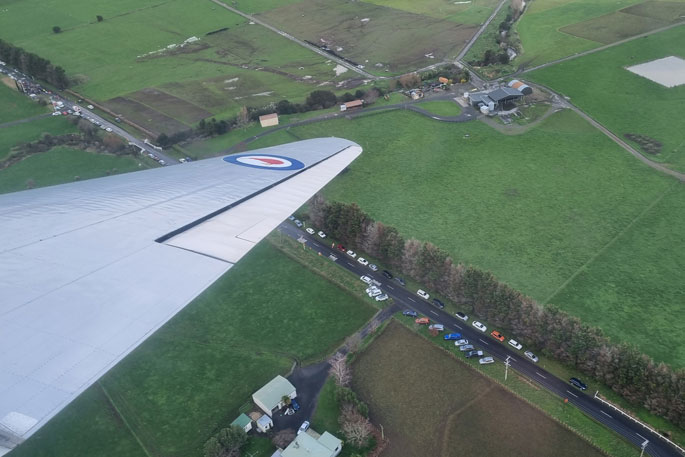The rain storm beat a loud tattoo on the hanger roof at Classic Flyers Museum. It momentarily drowned out the 60 year commemoration of the Kaimai Range NAC DC-3 air crash which claimed 24 lives.
And it wasn't lost on the 200 or so people attending the service on Monday though.
Because the weather – the heavy cloud, buffeting winds and torrential rain – was a major factor in Flight 441 nosing into a rugged rock face high on the Kaimai Range shortly after 9am on Wednesday July 3, 1963.
And so it seemed the weather gods had dumped on the hangar during the commemoration service as a loud reminder of what had gone before, as a salute to those who died and to those who lost family and friends.
Among them, Sandra Saussey, now in her 80s, and widow of the Flight 441 pilot Captain Len Enchmarch. She is a private woman. But she was heard to say there isn't a day goes by that she doesn't think of the crash.
And the other 200 people at the commemoration probably also often drift back to that horrific day.
 People gathered near the original crash site for the dedication on Monday. Supplied photo.
People gathered near the original crash site for the dedication on Monday. Supplied photo.
They were either closely affected by the tragedy, had heard the crash, perhaps involved in the search and rescue or even been to the crash site.
The most poignant moment of the short service was when Bishop Stephen Lowe, Roman Catholic Bishop of Auckland and an aviation historian, invited 'immediate family” to the new Remembrance Room for the dedication of Flight 441's engine which was recovered from the Kaimai Range just last week.
They would have lost family, mothers, fathers, aunts, uncles, in the crash and for many, it would have been their first tangible connection with the accident.
'That was powerful,” says one woman after seeing the engine.
Grant Horn was perhaps the ‘inspiration' behind retrieving the engine. He told the crowd few could access the rugged unforgiving terrain so the engine was 'important to keep the memories alive, otherwise they'll be lost forever”.
Another man at the service was a teenage radio operator. He went into the crash area on the day, set up his radio on a nearby ridge and relayed messages all day.
'No, I was considered too young to experience the actual crash scene first hand. Perhaps a wise decision in hindsight.” But the fascination, the connection, remained and he returned to the scene a couple of times.
Why? 'I have often asked myself that question?”
One of the men who discovered the engine on the slopes was David Park.
'The only reason I am here to today is because as just a kid at Nana's place in Otumoetai, I can remember her going on and on about it. It completely ruined her day.”
As it did for many people. ”She just kept saying those poor people, those poor people.”
.jpg) The original DC-3 on its flight 60 years ago. Supplied photo.
The original DC-3 on its flight 60 years ago. Supplied photo.
Earlier in the day, at 9.09am, the precise time of the crash 60 years ago, another DC-3 thundered over another commemoration service on the Old Te Aroha Road at Gordon.
The flypast disrupted the singing of the national anthem just as an aircraft crash has disrupted an entire nation six decades previously.



0 comments
Leave a Comment
You must be logged in to make a comment.